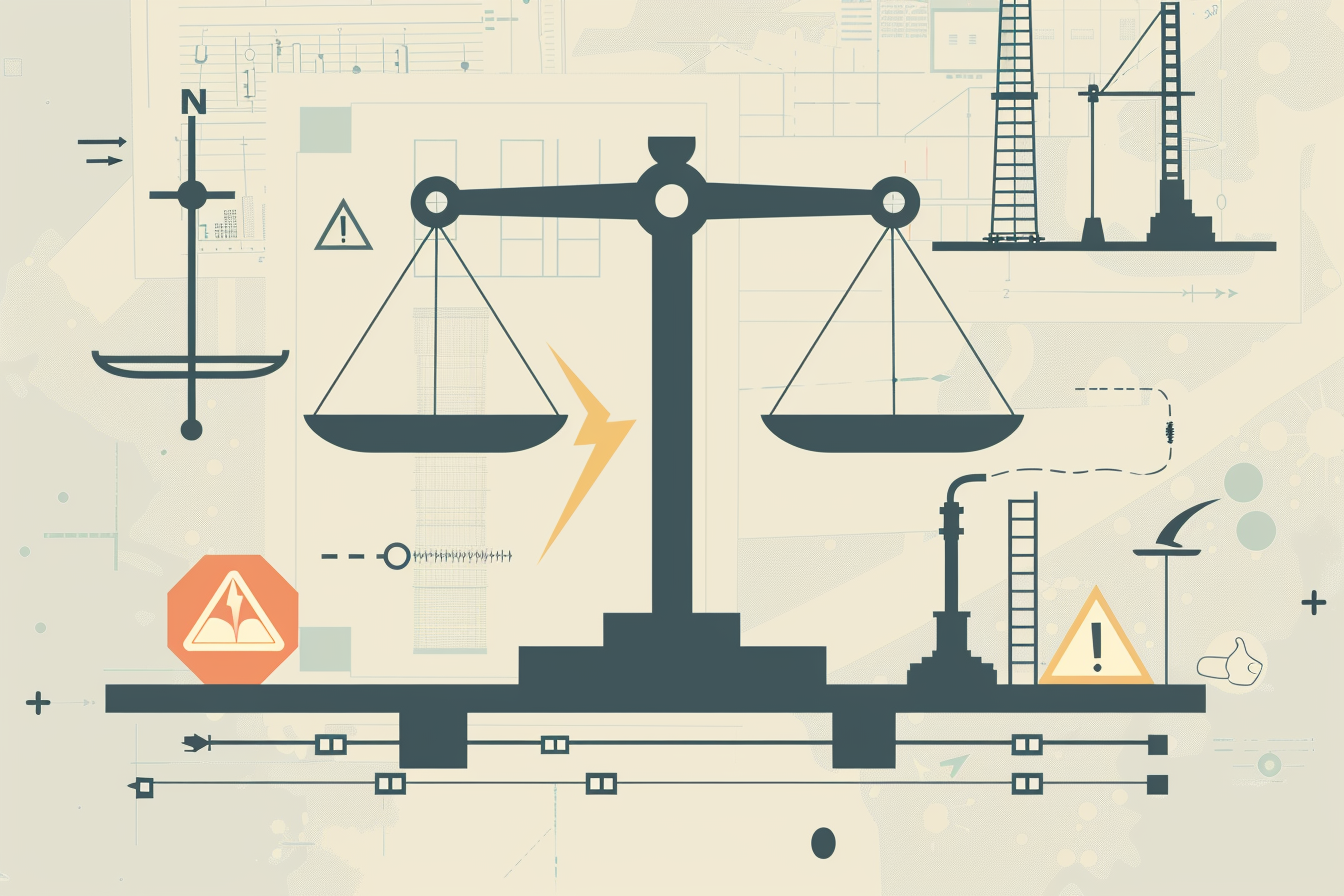Risk Assessment and Mitigation

1. Introduction
Architectural projects are complex, multifaceted endeavors involving numerous stakeholders, tight budgets, regulatory frameworks, and variable site conditions. Without proper risk assessment and mitigation strategies, even the most promising designs can fail in execution. For recent graduates stepping into professional practice, understanding how to anticipate and address potential challenges is vital. Risk management ensures project stability, protects client investments, and upholds the architect’s duty of care. This article provides a foundational and practical guide to risk assessment in architecture, exploring key concepts, applications, technical requirements, and case studies that demonstrate effective risk management.
Theoretical FoundationCore Principles
- Risk Identification: Recognizing potential events that may negatively affect a project.
- Risk Analysis: Assessing the likelihood and impact of each risk.
- Risk Response: Planning how to reduce or manage risk exposure.
- Risk Monitoring: Tracking risks throughout the project lifecycle.
Key Terminology
- Contingency Planning: Backup strategies prepared in advance.
- Value Engineering: A method to optimize design performance while managing cost and risk.
- Force Majeure: Unforeseeable circumstances (natural disasters, political unrest) that affect project execution.
Historical Context Modern risk management in architecture evolved alongside advances in project management and legal frameworks. Early architects relied on intuition and informal agreements. Today, standardized methodologies such as ISO 31000 and PMI guidelines structure how risk is approached. **Visual Aid Suggestion (Red):** Flowchart of risk management phases aligned with the architectural design process.
Practical ApplicationTypes of Risk in Architecture
- Design Risks: Errors in drawings or specification mismatches
- Site Risks: Unstable soil, hidden infrastructure, environmental hazards
- Legal Risks: Non-compliance with local codes or regulations
- Financial Risks: Budget overruns due to inflation, material costs
- Stakeholder Risks: Changing client preferences or conflicting priorities
Case Study 1: The Shard, London Designed by Renzo Piano, The Shard faced early financial risk due to the 2008 financial crisis. Developers diversified funding sources and adapted scope to secure continuity. Strategic phasing mitigated financial exposure.
Case Study 2: Sagrada Familia, Barcelona Antoni Gaudí’s landmark has endured over a century of political, financial, and regulatory risks. Transparent public communication and phased construction kept the project alive despite countless challenges.
Case Study 3: Seattle Central Library OMA’s design posed structural complexity and user flow challenges. Early modeling and simulations helped mitigate risks related to circulation inefficiency and energy performance.
**Visual Aid Suggestion (Red):** Risk map matrix highlighting impact vs. likelihood of common architectural risks.
Technical ConsiderationsRisk and Building Codes
- Adherence to IBC (International Building Code)
- Local zoning ordinances
- Fire safety, accessibility (ADA), and sustainability codes (LEED, BREEAM)
Contractual Protections
- Indemnity clauses
- Liability limits
- Scope definition in architectural agreements (AIA B101, RIBA contracts)
Coordination with Other Disciplines Architects must align their risk strategy with MEP, structural, and civil teams. Integrated project delivery (IPD) reduces fragmentation and promotes shared responsibility.
**Visual Aid Suggestion (Red):** Cross-disciplinary coordination chart showing risk points among architecture, structure, and MEP systems.
Implementation Guide
Step-by-Step Approach
- Conduct risk workshops with all stakeholders
- Create a risk register (categorized by type, impact, owner, status)
- Analyze and prioritize risks (qualitative and quantitative methods)
- Assign mitigation strategies
- Monitor risks through regular project check-ins
- Update plans and escalate as necessary
Best Practices
- Integrate risk into design charrettes
- Encourage open communication
- Use digital project management tools (e.g., Procore, BIM 360)
Pro Tip: Always allocate 5–10% of the construction budget for contingency to cover unknowns.
**Visual Aid Suggestion (Red):** Sample risk register template with color-coded status updates.
Common Mistakes and SolutionsMistake:
Overlooking site-specific risks
Solution: Always conduct a thorough site analysis and involve local experts early.
Mistake: Underestimating change orders
Solution: Build in review milestones and communicate constraints clearly.
Mistake: Ignoring soft risks (client relations, public opinion)Solution: Use stakeholder engagement strategies and public feedback loops.
Pro Tip: Risk is not just technical—it's emotional, financial, political, and cultural. Broaden your perspective beyond drawings.
Resources and Tools
Recommended Software
- Risk Register (Excel, Smartsheet)
- BIM 360 for integrated collaboration
- Primavera P6 for scheduling and risk overlays
References
- ISO 31000 Risk Management Principles
- PMI’s Practice Standard for Project Risk Management
- AIA Risk Management Resources
Professional Organizations
- Project Management Institute (PMI)
- American Institute of Architects (AIA)
- Royal Institute of British Architects (RIBA)
Pro Tip: Don’t rely solely on software—cultivate risk intuition through experience and mentorship.
\**Visual Aid Suggestion (Red):** Tool comparison table showing functionality and pricing of risk management software.
Conclusion
Risk is inherent in every architectural project. From design inception to construction handover, effective risk assessment and mitigation are indispensable for successful delivery. For recent graduates, mastering this process translates into confidence, leadership, and project stability. By embedding risk strategies early and maintaining open communication throughout, architects not only safeguard their projects but also enhance their professional value. Risk-aware designers are proactive, not reactive—a crucial distinction in today’s demanding built environment. Understanding risk is not about avoiding problems, but about preparing for them and reducing their impact. This mindset turns challenges into opportunities for innovation and resilience.